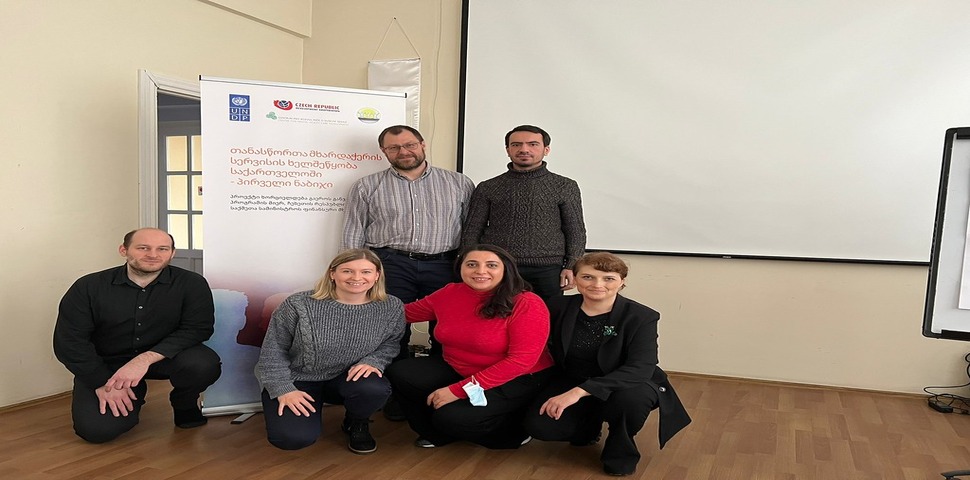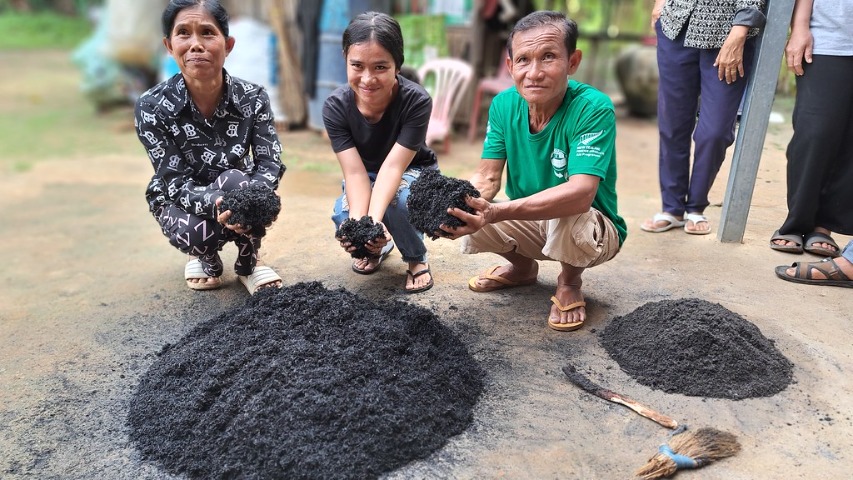Tea is the world’s most consumed drink, after water. To celebrate the importance of tea, UN declared May 21st as International Tea Day. While we don’t know exact place where the first tea was grown, there is evidence, that tea was consumed in China 5,000 years ago. Throughout the world, tea is a popular drink for its taste and its benefits for the human body.
Nowadays, the tea industry is an important source of income and export revenues for many countries. In some remote places and rural areas, tea production provides a vital source of livelihoods jobs.
Czech-UNDP Partnership realizes the importance of tea and its effect on the development of the rural areas. Since 2018, it has been supporting the development of tea production in Georgia’s Guria-region. The project succeeded in providing jobs for the local communities, boosted local trade opportunities, and formed new partnerships between local producers. On the occasion of International Tea Day we talked to Mr. Petr Sič, who leads the tea-development projects of Czech-UNDP in Georgia.
In Georgia, the tea production has a long tradition, which unfortunately waned in the past and now there is an effort to bring it back. What inspired you about the tea production history there?
Georgia has cultivated tea since mid-19th century, and it used to be the world´s fourth-largest tea exporter for many decades. The tradition started in Guria, where I nowadays implement the project. I was inspired by the very strong local tradition of black tea and the local knowledge about tea production, which I can rely on in my own work.
The project has been running for a few years now, how did it progress/change and what do you consider the project´s biggest success so far?
Back in 2015, there was only an old factory with machines from the cold war era. At first, we only bought the leaves from our neighbors and that made it difficult to control the quality. Also, the local production was mainly focused on basic machine-made teas, which was targeted only on local use and limited export. We were the first ones to experiment with our own production – we bought 0.5ha of land situated in an old garden that needed to be saved. Then we started to focus on quality – handmade teas, which gradually changed our target market. The handmade tea production methods were also a new skill that we shared with our local partners. We have gained stable partners in the EU – for example the Czech Oxalis or the French Palais des Thes. Nowadays, we have 3 hectares of land that we are trying to certify for organic tea production purposes. We have enlarged the factory – half of it is made of modern tea machines and most of our production goes to EU countries.
What was on the other hand the biggest challenge?
Our project, like many others, started with a big investment and plans to get down to work. Then Covid-19 came, which changed the EU market as some of our customers went bankrupt. Now the current conditions of expensive energy make the transportation costs more expensive for us. Overall, we can say the last two years caused a setback for our original plans. We are now getting back on track, but the finances, crucial for any further development, are quite stretched.
Where do you think is the potential of this project to scale-up?
First, there is an opportunity to grow further and get more land and increase overall production. Secondly, I see an opportunity to form a cooperation with additional local producers. We could share some machines and help each other because we share the same passion. Third is our business model structure – the orientation to the western market brings higher revenue for producers in our garden and this could be imitated by other local tea producers.
What was the most positive impact of the project so far for the local communities (also considering salaries, job opportunities, sustainability…)?
Our local colleagues are the core of the project. Last year, local workers came to see me at the end of the season. I initially thought they had a problem with something, but it turned out that they came to thank me for the work that we had done together. Life in this part of the country can get very difficult due to limited work opportunities. It is a challenge to attract investments in this region. There is a limited infrastructure and very few people. For me, continuing the tea project means not only an opportunity to produce good tea and pay wages for local communities, but also for me being a stable partner that people can rely on. In the season, we give work to over 120 families and we know, that it does make a big difference for the local community. In the tea making business, we pay people right away, not in half a year. We built a relationship around the local tea tradition and people in Guria know they can rely on us.
What were the biggest benefits for you to cooperate with Czech-UNDP Challenge Fund?
To be honest, without cooperation with the Czech-UNDP Challenge Fund, we could not have started the initial work that brough the biggest changes in the tea production in Guria. And if it was not for the Challenge Fund, we might have had to leave the project altogether when the Covid-19 wave hit us. But that’s now behind us and we look forward to cultivating more land to produce more tea.
About the Challenge Fund
Tea project in Guria region is a part of the Challenge Fund – Czech Solutions for SDGs. Through the Challenge Fund, the Czech-UNDP Partnership for SDGs brings innovative solutions from the Czech Republic’s private sector, NGOs, universities, state institutions, research centres and individuals to tackle specific developmental challenges in the priority countries. The implementation of Challenge Fund projects is financially supported by the Ministry of Foreign Affairs of the Czech Republic.
Currently we are preparing a new call for application so follow us and start thinking about the ways you can participate!








